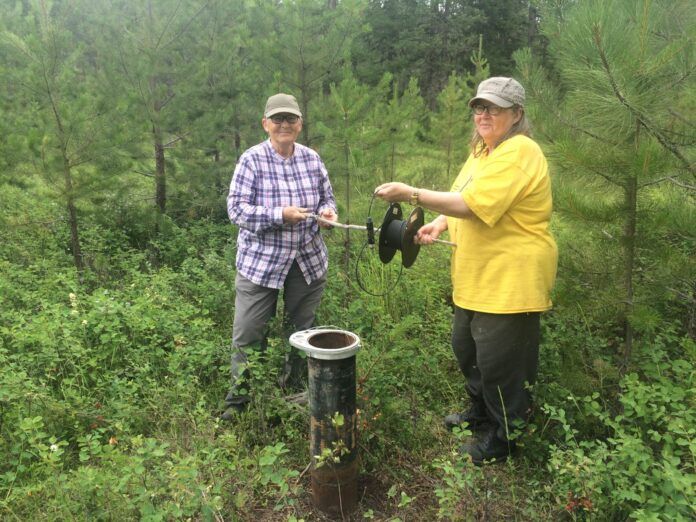Living Lakes Canada says worsening drought conditions highlight the need for comprehensive water monitoring.
Officials with the organization said this comes as 56 per cent of B.C. is faced with Drought Level 5.
Living Lakes Canada’s Columbia Basin Groundwater Monitoring Program is tracking annual changes by collecting long-term data on groundwater levels.
“This year, we saw below average snowpack followed by above average spring and summer temperatures,” said Paige Thurston, Columbia Basin Water Monitoring Framework program manager. “This has contributed to earlier spring runoff and lower levels of water in our streams and groundwater than we’ve observed in previous years.”
LLC officials said many municipalities and rural property owners rely on groundwater, but little is known about how climate change, land use, and other impacts affect the water.
“The impacts we’re looking at include water supplies for communities, fire suppression, flow needs for fish as we start to see these decline, we can also see an increase in temperature,” said Thurston. “This all has an impact on the ecology of these watersheds.”
The program up to six years of data for some wells, providing some information on how aquifers are impacted:
- This spring, water levels in some wells were the lowest recorded to date.
- In one of the wells, we’ve seen a decreasing trend over the last six years.
- In other wells, peak water levels occurred earlier this year than in previous years. This corresponds with this year’s smaller winter snowpack and unseasonably early snowmelt.
“We can expect to continue to see changes in our climate and in our resulting hydrology in our region,” said Thurston. “We can anticipate to see declines in our snowpack, changes in the timing of our streamflow and resulting changes in the quality and quantity of water.”
Thurston said climate change plays a role in the situation we find ourselves in.
“Of course, there is natural variation from one year to the next in hydrology, but we’re starting to see more extreme trends,” said Thurston. “We’re seeing higher temperatures and lower flows becoming more regular occurrences.”
LLC officials said they are monitoring local water levels around the Kootenays, as many aquifers in the Columbia Basin are small and fragmented.
“Each responds differently to climate conditions and water usage demands. The Living Lakes Canada program is addressing the gaps in groundwater monitoring across this complex landscape by continuing to collaborate with water supply operators, First Nations, municipalities, ranchers, land trusts, post-secondary institutions, and private landowners to collect and share groundwater level data.”
Thurston says residents can be more conscious of their water use to help preserve the vital resource.
“People are being urged to conserve water in their households,” said Thurston. “It’s also important that we monitor and track these changes so community members have the appropriate information and respond and adapt to these changes over time.”


